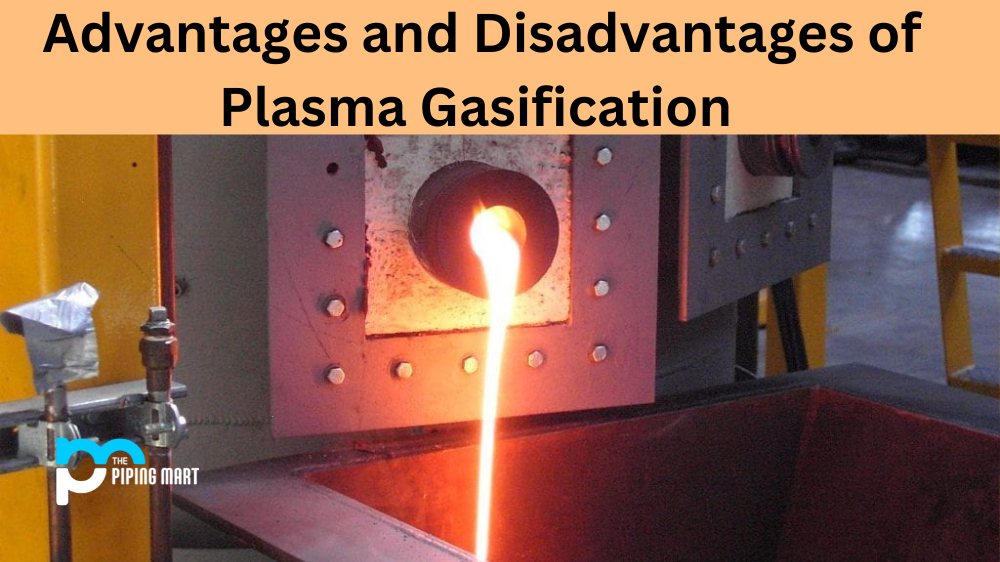Plasma gasification is an eco-friendly process that helps reduce the amount of waste sent to landfills. It involves using high temperatures and pressure to break down the components of waste materials into their base elements, which can then be reused or recycled. While this process has a lot of potential for reducing our reliance on traditional waste management methods, there are also some downsides that need to be taken into account.
Advantages of Plasma Gasification
One of the main benefits of plasma gasification is its environmental friendliness. Since it breaks down materials into their base components, it eliminates the need for landfills or incineration, both of which can have a negative impact on the environment. Additionally, since plasma gasification creates reusable by-products, it can potentially reduce our dependence on new raw materials. This means fewer resources will be needed in order to create new products, thus helping to reduce our environmental footprint.
Another benefit is that it can reduce the cost associated with traditional waste management practices. Since plasma gasification eliminates the need for landfills or incinerators, there are fewer costs associated with maintaining these facilities. Additionally, since reusable byproducts are created during the process, businesses may also save money by not having to purchase new raw materials as often.
Increased Strength
One of the primary benefits of plasma gasification is that it increases the strength of the glass. This is due to the fact that the plasma gasification process creates a stronger bond between the molecules in the glass. This results in glass that is more resistant to breakage and shattering.
Increased Durability
Another benefit of plasma gasification is that it increases the durability of the glass. This means that the glass will be less likely to scratch, chip, or break over time. Additionally, plasma-gasified glass is more resistant to heat and cold than traditional glass.
Improved Aesthetics
In addition to increasing the strength and durability of the glass, plasma gasification also improves the aesthetics of the glass. This is because the process creates a smooth, glossy surface on the glass. This can help to give the glass a more sophisticated and elegant appearance.
Reduced Environmental Impact
Plasma gasification also has a reduced environmental impact when compared to traditional methods of manufacturing glass. This is because plasma gasification does not require the use of harmful chemicals or pollutants during the manufacturing process. Additionally, plasma-gasified glass can be recycled without losing any of its properties, which further reduces its environmental impact.
Disadvantages of Plasma Gasification
Although there are many advantages associated with plasma gasification, there are also some drawbacks that must be taken into consideration before investing in this technology. One such drawback is that it requires specialized equipment in order to operate properly, which can be costly for businesses looking to invest in this technology. Additionally, since plasma gasification produces high temperatures and pressures during operation, safety measures must be taken in order to ensure that workers remain safe while operating these machines. Finally, due to its complexity and specialized nature, mistakes may occur more easily than with other methods of waste management.
High Cost
One of the primary disadvantages of plasma gasification is the high cost. The process requires expensive equipment and trained personnel, which can make it cost-prohibitive for many individuals and organizations. Additionally, the high cost of plasma gasification can make it difficult to justify the expense, especially when cheaper methods are available.
Limited Availability
Another disadvantage of plasma gasification is the limited availability. The process can only be performed at specialized facilities that have the necessary equipment and personnel. This can make it difficult or impossible to access plasma gasification services, depending on your location.
Time Consuming
Plasma gasification is also a time-consuming process. The entire process can take several hours to complete, which may not be feasible for some individuals or organizations. Additionally, the time required for plasma gasification can make it difficult to schedule appointments and keep them timely.
Requires Specialized Training
Another disadvantage of plasma gasification is that it requires specialized training. Individuals who want to perform the procedure must undergo extensive training in order to learn how to operate the equipment safely and effectively. This can make it difficult or impossible for some people to access plasma gasification services.
Risks and Complications
As with any medical procedure, there are risks and complications associated with plasma gasification. These risks include infection, bleeding, and scarring. Additionally, complications such as these can often be expensive to treat and may require additional surgery.
Conclusion:
Overall, plasma gasification offers a promising solution for reducing our reliance on traditional waste management methods while helping us become more environmentally friendly at the same time. However, like any other technology or process, there are both advantages and disadvantages associated with this method that need to be taken into account before investing in it for your business or organization’s needs. By weighing up all aspects carefully, you should be able to make an informed decision about whether this eco-friendly solution is right for you and your organization’s goals.

Pipingmart is a B2B portal that specializes in metal, industrial and piping items. Additionally, we share the latest information and information about materials, products and various types of grades to assist businesses that are involved in this business.




